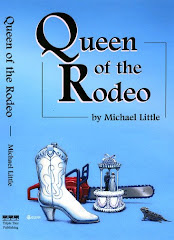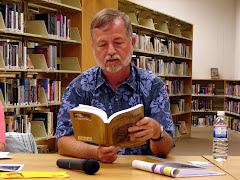In the middle of Frank Delaney's novel
A story has only one master—its narrator; he decides what he wants his story to do. I know, I have always known, what I want my stories to achieve—I want to make people believe. Believe what I tell. Believe in it. Believe me. Belief is the one effect I'm always looking for, and I apply every device, every pause, every gesture, every verbal nuance and twirl, to that end. To achieve it, I myself have to believe; if I don't, who will? I must believe ancient
It’s just one of thousands of paragraphs in a novel chock full of delightful Irish stories-within-the-big-story, but there it is on the top of page 278, like a gold nugget that I discovered when I turned the page.
The paragraph is the beginning of a chapter-long letter written by the master storyteller, an elusive oral storyteller whom our young protagonist pursues around
The narrator is the master of the story. A fiction writer narrates his story, whether he uses third-person narration or lets one of his characters tell the story first-person. Even in the quiet telling of the written story, the voice of the narrator rings out.
It’s almost the first decision I make in creating a story—selecting the point of view. In “Pickles and Shawnilynn and Me at the Mall,” a short story about three 8th-graders who spend an afternoon at Kahala Mall, the voice of Anna, the “Me” of the title, sings from first sentence to last. She is the master of the story, and letting her narrate was the perfect choice, even if it meant much time spent asking friends and strangers about current teenage slang and favorite teenage shops at the mall, and then visiting some of those shops. Just a word of warning—the Hello Kitty shops (Sanrio Surprise at Kahala Mall, in case you want to verify this) are incredibly, and dangerously, pink. Sunglasses would have helped. My eyes were sore for days afterwards.
“I want to make people believe,” Delaney writes. “Believe what I tell. Believe in it. Believe me.” I read the paragraph in
“To achieve it,” Delaney continues, “I myself have to believe; if I don’t, who will?” Absolutely true. The writer is the first reader. He must convince himself first. I carried Anna and her two best friends around in my head for weeks before I wrote a word of their story. And as I began to write the story she became more real.
Then I had a chance to read the “Pickles” story aloud for the first time to a group of writer friends, in a workshop on voice. As I read Anna’s story, she became more real to me than most of the teenagers I’ve met. She was in my head, and I was riding along inside her head, at least for one Saturday afternoon at Kahala Mall, as she and Pickles and Shawnilynn watched the Ratatouille movie and Anna told about the big surprise and the super cool stuff that happened at the mall. Of course I believe.
Frank Delaney’s
“Pickles and Shawnilynn and Me at the Mall” is scheduled for publication in October















2 comments:
Delaney's book is also about the purpose and function of storytellers, what it means to be a storyteller.
Well said! Delaney's master storyteller is a man with a mission, as is Delaney himself. The idea of believing deeply in the story certainly fits with that mission.
Post a Comment